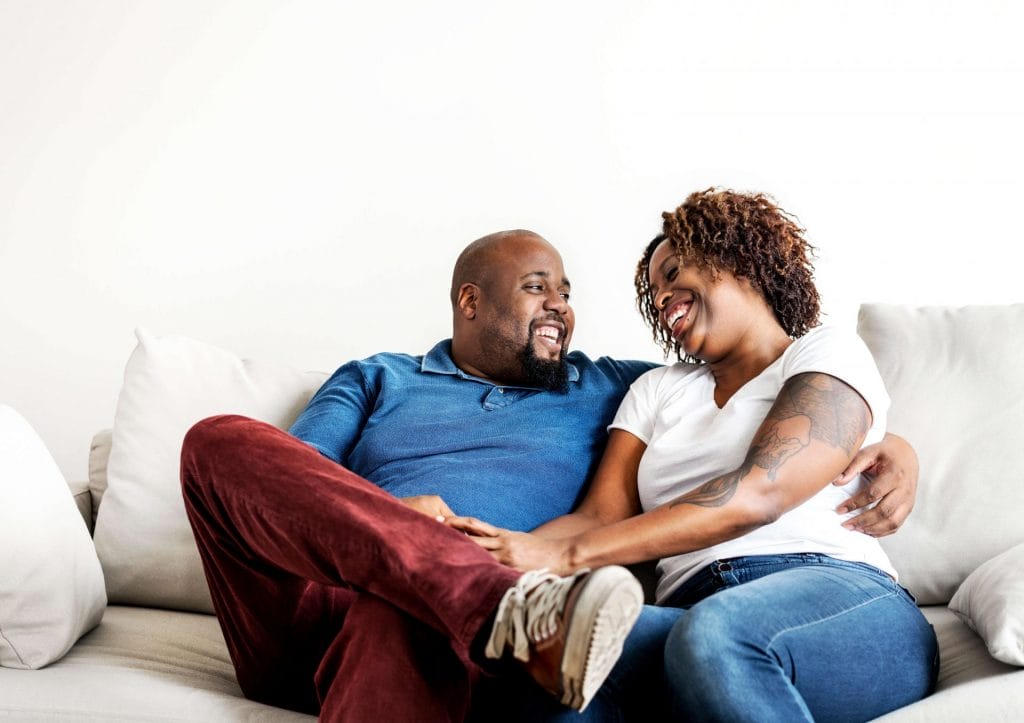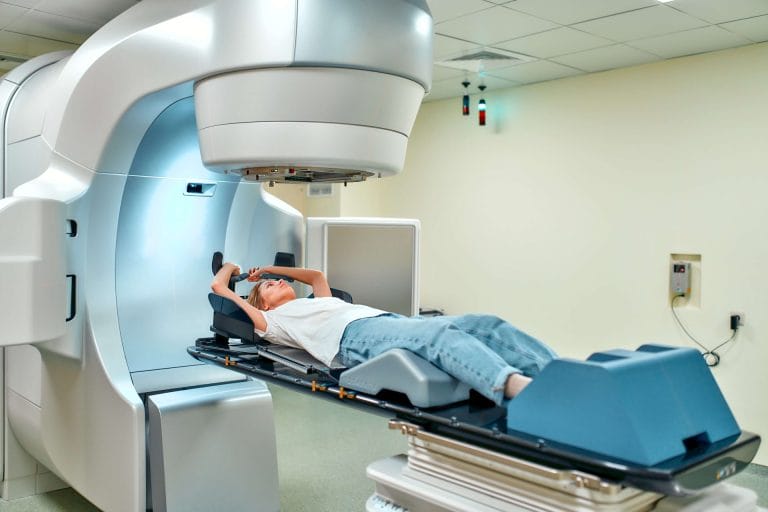While no one plans on becoming a stroke caregiver, about 3.5 million people across the country have stepped up to take care of a loved one who has suffered a stroke. When assuming the caregiver role, it is important to know the many resources available to help make looking after a stroke survivor more manageable.
Below, we will go over exactly what a stroke is, what to expect after a stroke and how to care for someone after a stroke. If you have recently become a stroke caregiver, you will find some helpful information about the stroke recovery process and your new responsibility.
What Is a Stroke: An Overview of What You Need to Know
A stroke can be overwhelming for both the patient and their family, and not knowing exactly what a stroke is or what its health implications are can be unsettling. To help you feel better prepared for addressing a stroke, here are the three most common questions asked about strokes, plus their answers:
Connect with Our Stroke Recovery Team
1. What Is a Stroke?
A stroke is a type of brain injury that occurs when the brain tissue cannot get enough nutrients and oxygen. This happens because blood flow to the brain has been interrupted or reduced in some way. Without the proper amount of nutrients and oxygen, brain cells quickly begin to die, but early action can minimize brain damage and mitigate complications. Stroke survivors often have weakness on one side of the body, depending on which part of their brain was affected, along with difficulties moving, thinking or talking.
2. What Causes a Stroke?
Most strokes are ischemic strokes, which are caused by restricted blood flow to the brain. This type of stroke results from blood vessels being blocked by a clot or becoming too narrow for blood to pass through. During an ischemic stroke, blood cells in the affected area of the brain begin to die from a lack of oxygen. A “ministroke” is a transient ischemic attack, which is similar to an ischemic stroke but less severe and unassociated with permanent damage.
Hemorrhagic strokes are the second type, which occur when a blood vessel bursts and blood leaks into the brain, subsequently causing damage. Hemorrhagic strokes can result from different conditions that affect the blood vessels.
3. Who Are Strokes Most Common In?
Strokes most frequently occur in older people, with almost 75% of all strokes affecting individuals 65 or older. Although strokes are most common in older individuals, a person of any age can have a stroke.
Recovering From a Stroke: What to Expect
It can be difficult to know what to expect from the stroke rehabilitation and recovery process. However, having answers to these frequently asked questions can help you be better prepared.
What Type of Symptoms Are Common?
A stroke can have physical, mental and emotional effects. Here are common physical conditions that occur after a stroke:
- Weakness or paralysis: Weakness or paralysis occurs in 80% of stroke victims. One whole side of the body may be affected, or movement in just a leg or arm could be impaired. Depending on which side of the brain experienced the stroke, the opposite side of the body will see the effects.
- Balance or coordination complications: A stroke survivor may struggle to sit, stand or walk despite adequate muscle strength.
- Sensations of pain or numbness: Abnormal sensations may make a stroke survivor unable to get comfortable or relax at times.
- Trouble swallowing: Difficulties swallowing may make eating more frustrating after a stroke.
- Bowel or urinary control problems: Bowel or urinary incontinence can be common in stroke survivors.
- Fatigue: Stroke patients may get tired quickly, which can make fully participating in a stroke rehabilitation program challenging.
Stroke survivors may also endure these mental health symptoms:
- Aphasia: Aphasia is a language disorder that causes communication issues by affecting the patient’s ability to both understand and express spoken and written language. Typically, speech therapy is the main treatment for aphasia. Although it may sound overwhelming, knowing what aphasia is and how to address it is a big step toward recovery.
- Cognitive complications: A stroke survivor may face a range of cognitive challenges such as memory problems, a shortened attention span, trouble learning or difficulty thinking clearly.
- Bodily inattention: It is not uncommon for a stroke patient to not look toward their weaker side or even eat food from the half of the plate according to their weaker side.
- Unawareness of symptoms: Stroke survivors may not fully grasp the extent of their symptoms and misjudge their ability to complete tasks like they used to.
These are some of the emotional effects a stroke survivor might experience:
- Depression: Although it may not show up until weeks after the stroke, survivors frequently struggle with depression. It is natural for feelings of hopelessness or pessimism to creep in. Professional help should be sought for suicidal thoughts.
- Anxiety: The effects of a stroke can be anxiety-inducing. It is not unusual for stroke patients to feel more anxious or worried than usual.
- Mood swings and outbursts: Because adjusting to stroke effects is extremely emotionally taxing, stroke patients tend to have sudden bursts of emotions like laughter, anger or crying.
What Percentage of Stroke Patients Make a Full Recovery?
To a certain degree, the brain can heal itself after a stroke. With the right amount of rehabilitation, a person’s speech, cognitive, motor and sensory skills can steadily be recovered. Although just 10% of people almost fully recover from a stroke, 25% have only minor impairments and 40% have moderate impairments that are manageable with some special care.
How Long Is Recovery?
Exact stroke recovery time depends on the severity of the initial stroke and the amount of damage it caused. The most rapid recovery progress is made in the three to four months immediately following the stroke, with more gradual progress occurring in the first and second years afterward. With ongoing rehabilitation measures, such as physical, speech and occupational therapies, stroke patients can make long-term gains.
Explore Comprehensive Stroke Rehabilitation Services
How Does This Impact Everyday Life?
Stroke patients may have trouble with daily living activities, such as bathing and dressing, that were easy before. More complex tasks like housekeeping and driving, known as instrumental activities, may also be more difficult than before the stroke. A stroke’s physical symptoms may also lead to more specific problems like experiencing spasticity or learning to use only the stronger side of the body.
Along with the physical effects, a stroke’s cognitive symptoms may make everyday mental activities more difficult for survivors, such as remembering where an item was placed, following directions or keeping track of the date and time. Some of the setbacks that come with enduring a stroke may not be noticeable until the patient is back home. Therefore, someone should be at home whom the patient can rely on for assistance if needed.
6 Tips for Stroke Caregivers
The responsibility of providing care for a stroke survivor can weigh heavily. If you suddenly find yourself stepping into the caregiver role, here are six tips to help you through the process:
1. Talk With Healthcare Professionals
To be the best caregiver possible, you need to be properly informed. Although you may feel bombarded by new information the first few days, try to soak up as much as you can to learn the level of care your loved one will need. It is natural to feel overwhelmed and unsure of what to do at first, so seeking medical advice when you need it is key to being a good caregiver.
You can take an active role in your loved one’s recovery process by asking the healthcare professionals treating them any questions you may have. For example, you may wonder if a person can recover from aphasia. Consider bringing a list of questions to each medical appointment to be fully prepared. In addition to your own queries, ask your loved one whether they have any questions they feel timid about asking themselves.
2. Assess Your Finances
Even with the help of health insurance or Medicaid, stroke treatment can be a financial burden, and navigating the healthcare system can be confusing. First, contact your insurance company to find out exactly how much the out-of-pocket costs will be for covering your loved one’s stroke. Depending on what your insurance company says, you may need to file an appeal or get in touch with your hospital’s social service department or case manager to receive financial assistance.
Once you have determined the overall cost of the hospital charges, you can begin calculating the expenses of caregiving. Factor in the income lost from your loved one having to miss work, along with the amount of work you might need to miss to provide care.
If you are not able to take as much time off from work as you need to, consider contacting a professional healthcare service provider for extra assistance when you cannot be around. If your loved one has Medicare, medical and rehabilitation services and any necessary outpatient therapies will be covered.
3. Participate in the Rehabilitation Process
Because stroke recovery can come with a lot of emotional strain, supporting your loved one throughout the recovery process can considerably boost their mental health. Accompanying your loved one to therapy whenever possible and assisting them with at-home exercises are great ways to make them feel less alone. Attending appointments will also help you learn more about your loved one’s condition and see their progress firsthand.
Although supporting your loved one is key, it is equally important to encourage their independence as long as they can safely complete the given task without assistance. Increasing their sense of autonomy will elevate their confidence and overall optimism about the future. Try to find the balance between being emotionally supportive and empowering your loved one to regain their sense of self-reliance.
4. Be Mindful of the Patient’s Moods and Behaviors
Part of being a caregiver is being sympathetic to your loved one’s emotions and patient with moods and behaviors that may be out of character. A stroke is a traumatic event that brings many big lifestyle changes, and your loved one may struggle with how to cope emotionally with these sudden adjustments. Make sure they feel comfortable sharing how they feel with you and do your best to listen with empathy.
Although your emotional support is important, professional help may be needed in more serious cases. Depression can inhibit stroke recovery both emotionally and physically, so consult a healthcare professional if you think your loved one would benefit from emotional therapy. Joining a support group with fellow stroke survivors may also help your loved one by allowing them to talk with others who have gone through similar experiences.
5. Remember to Take Care of Yourself, Too
When providing constant care to a stroke patient, it can be easy to absorb a considerable amount of secondhand trauma. Caregivers often internalize the stress their patients are under, so prioritize caring for yourself as well as your loved one. Looking after your physical and mental health will also enable you to function at your highest capacity and be a better caregiver.
Do not be afraid to ask a friend or family member to cover for you as the main caregiver for a night so you can recharge your batteries. Being a full-time caregiver can be exhausting, but taking a break every once in a while will give you the space you need to rest and replenish your energy, patience and positivity. Some other simple self-care tips for caregivers to follow include eating healthy, exercising regularly and getting enough rest.
6. Enlist the Help of Others As Necessary
As the primary caregiver for a stroke survivor, you may feel as if you have to do everything yourself, but no caregiver can do it all on their own. For the sake of your loved one’s health, make sure you seek help from medical professionals whenever needed. There are plenty of options regarding treatment for stroke that still allow for strong family involvement while providing more professional assistance.
In particular, outpatient care can be a powerful resource for rehabilitating stroke victims. Getting your loved one on track with a comprehensive stroke rehabilitation program can help reduce long-term impairments while managing current symptoms. Find a stroke recovery facility that offers individualized treatment plans and a full spectrum of care options, from physical and speech therapy to rehabilitation nursing and nutritional coaching. Identifying the right outpatient care provider can give your loved one the specialized care they need and provide you with peace of mind.
Discover Our Outpatient Care Options
Contact PAM Health to Discuss Stroke Treatment Options
If you are a stroke caregiver looking for quality care for your loved one, find the PAM Health location nearest you today. PAM Health strives to provide the highest-quality care possible to achieve patient satisfaction along with long-term positive outcomes. The medical professionals at PAM Health are certified in specific conditions, such as stroke recovery, to offer specialized services in a friendly and caring environment.
Whether you are looking for outpatient or inpatient care for your loved one, you can contact your local PAM Health hospital to discuss your stroke rehabilitation plan options.
Find a PAM Health Location Near You



